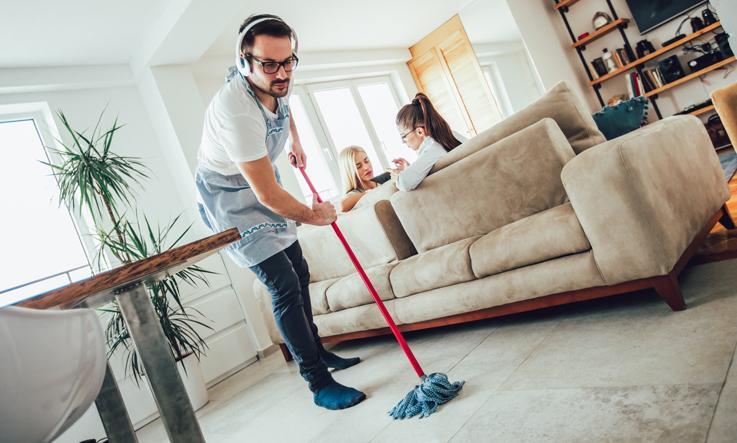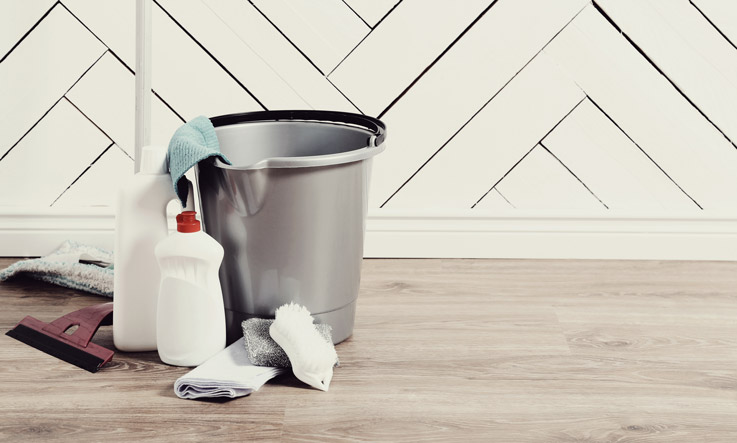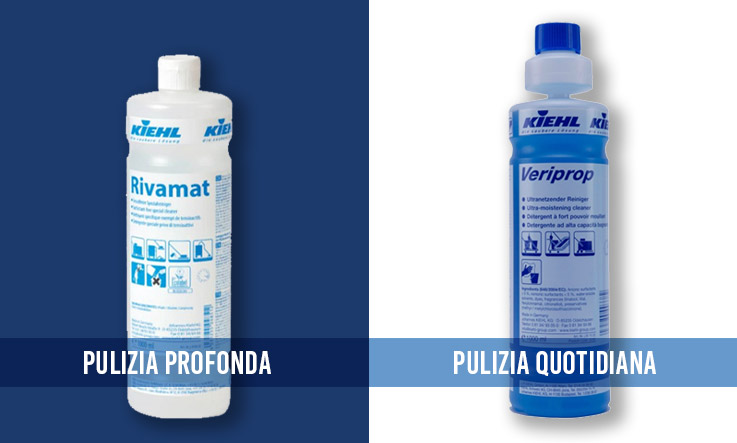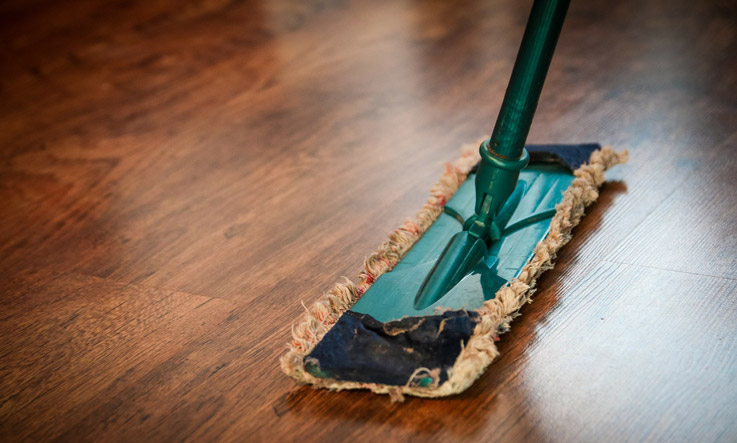
Vinyl floorings: cleaning tips
The correct maintenance of vinyl floorings not only guarantees a clean product, but also preserves the duration of its performance, which is a fundamental factor in the long term. Considering that PVC floorings have been used for over 60 years in high-traffic areas, such as hospitals, public offices etc. it goes without saying that cleaning these type of surfaces does not involve particular difficulties.
In order to obtain the best results, however, it is necessary to follow some simple procedures. As always, the first cleaning is crucial to eliminate possible defects or dirt which, if not eliminated at this stage, are very difficult to remove later.
First cleaning

We advise to use a cleaning machine equipped with discs and a liquid recovery function. The best results are obtained by using an alkaline detergent and a rotocleaner with between 300 and 450 revolutions per minute. Alternatively, pre-impregnated mops made up of disposable strips of antistatic fabric can also be used.
Daily cleaning
Although it is preferable to use solutions that imply the removal of the water at the end of the cleaning process to avoid its re-deposition, daily cleaning of LVT floorings can also be done with a normal mop with a microfiber cloth. In this case, a neutral detergent must be used, and the liquid solution must be promptly removed from the surface through a thorough rinse.
Deep cleansing
If for any reason the floor is extremely dirty, you can proceed with a mechanical cleaning using a rotocleaner with a liquid recovery function, just like for the initial cleaning. You can therefore use an alkaline detergent and between 300 and 450 revolutions per minute. As for the discs, whose classification is based on the different colour, we recommend red or almond discs.
Recommended cleaners

For maintenance, we recommend specific detergents for PVC floorings from different manufacturers on the market. We have efficiently tested the detergents of Kiehl, a German chemical company, and have selected two products, an alkaline and a neutral one, which are able to cover different cleaning phases:
• Rivamat,alkaline detergent for deep cleaning or after installation
Special detergent without surfactants for universal use
Easily removes industrial dirt, oils and greases
Extraordinary cleaning power
Free of enzymes, phosphates or surfactants
Especially suitable for machine cleaning
Certified with the European Label and the Austrian Ecolabel
• Veriprop , neutral, for daily cleaning
very active cleaning detergent for everyday use with high wetting capacity.
It is therefore possible to clean especially water repellent surfaces without leaving streaks and it is ideal for routine cleaning as it has the peculiarity that it can remove the dirt with an astonishing simplicity
Precautions for use
We want to underline the importance of choosing the right detergents, as solvents or abrasive discs can irreparably compromise the protective layer of the PVC flooring. Furthermore, we recommend using PVC or polyethylene plugs and not rubber plugs for chairs, desks or furniture, as rubber dirties the floor much more easily than the latter materials.
Specific cases

Removal of varnish stains
• Do not use abrasive cleaning accessories (eg. abrasive sponges, steel wool, etc.).
• Use a specific solvent for the type of varnish. If you do not have the specific solvent, start with solvents such as white spirit before trying stronger detergents. If the stain proves difficult to remove, do not persist.
• Thoroughly clean and wash the floor after applying the solvent.
Removal of varnish drops
• A freezing spray will produce excellent results when the varnish is dripped (freezing spray can be purchased from manufacturers of cleaning products or in pharmacies).
Stain removal from adhesives
Stains from recent acrylic adhesives (<1 month)
• Apply a water-based solution with a detergent; allow to react, clean mechanically and rinse the floor.
Stains from dry acrylic adhesives (> 1 month)
• Use White Spirit or similar products. Thoroughly clean the floor after applying the solvent.
Stains from solvent-based adhesives
• Use strong solvents (such as Taraclean spray) but do not persist if adhesive stains are difficult to remove
Rust
• Apply a rust inhibitor or oxalic acid. Rinse thoroughly.
Greasy food / paint / ink / marker / heavy grease (tar)
•Use White Spirit or similar products. Rub the undiluted product through the surface and rinse with plenty of water.
Rubber / Shoe Marks
• Apply an alkaline cleaner to the shoe stain. Allow to react for 5 minutes. Rub.
Chewing-gum
• Use a freezing spray to harden the chewing gum and then remove it with a plastic spatula (freezing spray can be purchased from manufacturers of cleaning products or in pharmacies).
Final remarks
Proper cleaning of the vinyl floor, which for its very nature is prone to being scratched, if not properly protected even with a simple doormat at the entrance of the room to remove any pebbles or splinters from the shoe soles, will also result in the visual disappearance of those scratches. In fact, with the removal of the dirt that penetrated into the scratch, the visual perception of the scratch itself will disappear, as it is normally so thin that it is no longer detectable, once the dirt that highlighted it has been removed.